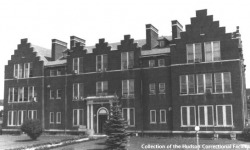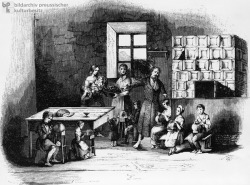Delinquent Children
The Juvenile Reform School
By: Jax
"Of the many and valuable institutions sustained in while, or in part, from the public treasury, we may safely say. that none is of more importance, or holds a more intimate connected with the future prosperity and moral integrity of the community, than one which promises to take neglected, wayward, wandering, idle, and vicious boys, with perverse minds and corrupted hearts, and cleanse and purify and reform them, and thus send them forth in the erectness of manhood and in the beauty of virtue, educated and prepared to be industrious, useful and virtuous citizens."
-Governor George Briggs, 1848
Juvenile Delinquency and the Invention of Reform Schools in the Nineteenth Century

What is a "reform school". The definition in the 1800's was envisioned as "a field of dreams on which to plan grand schemes for salvaging errant youth." Not until the nineteenth-century was a real institution developed. The term “juvenile delinquency” was originally and commonly used to single out the suspicious activities of the lower-class children who were seen to be living free of adult guardianship. In January of 1825, the New York House of Refuge had its grand opening. This was known to be the first of the early reform schools. The founders of the reform school agreed that their “clientele” (sic) would mainly be a mismatched group of lower-class children. These children would not only be those who had been convicted of a criminal act, but also those whose behaviors were predicted to come in contact with the law. Also, the founders wanted to work their hardest to prevent a lifetime of poverty and crime, so they adopted children who had lived in circumstances of homelessness.
http://www.aliciapatterson.org/APF1703/Bernstein/Bernstein.html
Reform Schools Triumph
The reform school movement emerged mid-century in both the United States and Western Europe. The number of reform schools grew from only the small number of three in the mid-1840s, to twenty in 1860. The spectacular thing about these twenty prisons was that ten of them were sponsored by states. The first reform school to be sponsored was Westborough in Massachusetts in 1847. In the 1870s reform schools expanded to over fifty, and by the end of the nineteenth century, reform school s were common in everywhere but the South.
Instilling Self-Discipline
Respecting authority was the main principle to organizing most reform schools. The idea was the inmates and their keepers would learn to live harmoniously. Complete obedience was demanded, and officials were ready to extinguish disobedient prisoners with beatings. Physical punishment was considered normal, and prisoners were whipped or placed in solitary confinement for failing to complete the daily activities and requirements. This was harder for children because of the attention spans. There were many ways to insinuate self-discipline, but the one that was most commonly used was the obligation to a fixed routine, where every minute of an inmate’s day was scheduled. The officials hoped to maintain order, and also to keep the children from mischief.
A Typical Day...

"At sunrise, the children are warned, by the ringing bell, to rise from their beds. Each child makes his own bed, and steps forth, on a singal, into the hall. They then proceed, in perfect order, to the Wash Room. Thence they are marched in the yard, and undergo an examination as their looked for cleanliness; after which, they are occupied in summer, until 7 o’clock. A small intermission is aloud, when the bell rings for breakfast; after which they proceed to their respective workshops, where they labor until 12 o’clock, then they are called from work, and one hour is allowed for them to wash and eat their dinner. At one, they again commence work, and continue at it until the afternoon, when the labor of day terminates. Another half an hour for washing and eating their supper and at half-past five they are condemned to their school room where they continue their studies until 8 o’clock. Pray is performed for the Superintendent, after which they head to their dormitories, which they enter, and are locked up for the night, when perfect silence reigns throughout the establishment.”
Work and School Requirments
Although work and school routines at the reform schools varied a little, the basic patterns were the same everywhere. The school portion received a lot more attention than in any adult prison, however it rarely went farther than the elementary level, and teachers lacked qualifications for their subject. As important as schooling was, it still came second to the work. The work required for reform schools was less demanding than the assigned work for adult prisoners. There was a lot less pressure on the younger children, than the adults.
http://flickr.com/photos/80294279@N00/1252323473


